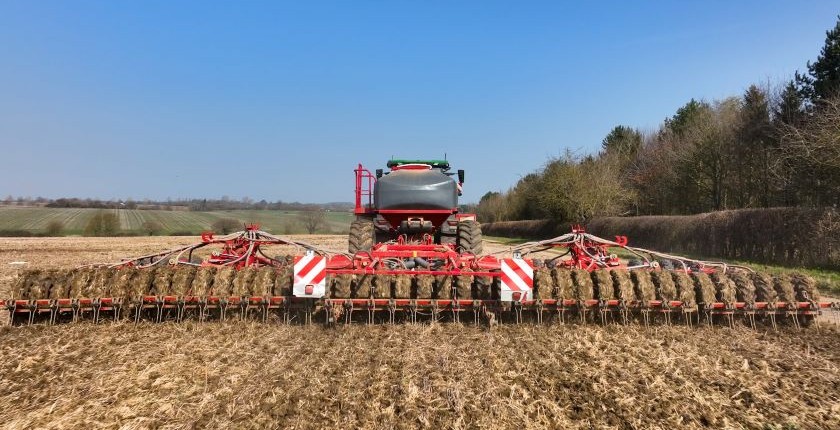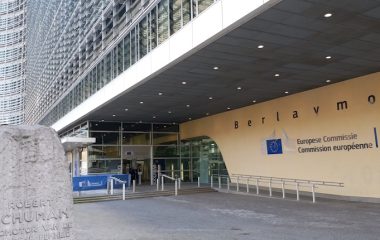
Photo: Agreena
Carbon capture and storage in agricultural land could become one of the more effective methods in combating climate change. New emerging businesses in this sector intend to monetize carbon storage and attract farmers to join the carbon bond trade. The soil carbon certification programs aim to enable farmers to remove carbon from the atmosphere and store it in the soil they cultivate, using less invasive agricultural practices.
The basis for considering such climate solutions is the processes of carbon circulation in the environment. Carbon is the basis of life on earth because it maintains biological activity, diversity, and productivity of ecosystems.
Carbon sequestration is the process of absorbing carbon (C) from the atmosphere, which is in the form of carbon dioxide (CO2), and retaining and storing it in the soil.
One of the most effective ways to partially reduce the level of CO2 in the atmosphere is through the natural photosynthesis process. Humans and animals release CO2, while plants take it in, release oxygen (O2) and retain carbon in the soil.
Given the methods and cultivation and cultivation of plants, this process shows that agriculture, together with animal husbandry, can be one of the solutions to the problems of greenhouse gas emissions and climate change.
Soil is a carbon reservoir
Soil absorbs about 20% of anthropogenic carbon emissions each year. It is a huge reservoir of carbon that collects about 60 gigatonnes of carbon per year from the atmosphere. Consequently, oscillations in land’s carbon storage capacity influence the global carbon cycle and future climate. Because of its size and intensity, agriculture directly impacts soil carbon storage and its release into the atmosphere.
Through new programs, farmers have the opportunity to monetize the captured CO2
Through the new programs, farmers have the possibility to monetize absorbed CO2 and capture and store carbon in the soil. Carbon credits, carbon financing, and carbon payments are now becoming options they can take into account.
Carbon Circulation and Climate Change
It is worth reiterating that the crude oil that is burned today is carbon from plant and fossil material that has been stored underground since about 300 million years ago. So CO2 emissions in the atmosphere are essentially carbon released from the ground, or carbon that hasn’t been in the atmosphere for at least those 300 million years.
The basis of climate change can be understood as a disruption of the circulation of carbon in nature
The carbon cycle was in the balance until the beginning of the industrial revolution in the late 19th century. The basis of climate change can be understood as a disruption of the circulation of carbon in nature.
Sequestration process
Sequestration can take place through photosynthesis processes and carbon retention in plants. The more permanent and long-lived the vegetation, the more CO2 it absorbs. Hence, in the context of climate change mitigation, one may also overview the agroforestry and plantation of perennial cultures.
If the plant material is decomposed more slowly and naturally, carbon retains longer in the soil
To achieve efficient carbon storage crops and soil should be managed in such a way as to control and reduce the rapid decomposition and oxidation of organic matter. If the plant material is more slowly and naturally decomposed, the carbon remains in the plants and soil for longer.
Reducing soil erosion helps with a carbon storage retention
For carbon storage retention it is also important to reduce soil erosion. That can be achieved by growing certain crops and avoiding invasive soil treatment, frequent plowing, and burning vegetation. Carbon storage in agricultural land can be a time-consuming and sensitive process, and with poor management can easily be disrupted.
Certification program for farmers
The Danish company Agreena emerged among the first in the sector of carbon sequestration on the European market and is now announcing the business expansion in Romania. Agreena provides farmers with certificates that can be sold on the carbon market, each equivalent to one tonne of CO2.
The company has developed an internationally accredited soil carbon certification program, AgreenaCarbon. Farmers can quantify the amount of reduction in greenhouse gases and soil carbon, which has been extracted in one harvest year and obtains certificates with which they can trade.
Agreena is present in 14 countries and is certified on more than 570,000 hectares. It has developed an AgTech platform that quantifies the baseline values of greenhouse gas emissions on agricultural land following the latest UN IPCC guidelines and monitors and reports on greenhouse gas reductions and carbon removals.
Change of approach in agriculture
According to the European Environment Agency, agriculture generates about 24% of greenhouse gases globally, uses 70% of the world’s drinking water resources, and causes 78% of water pollution.
“European countries are enhancing the investments in conservation agriculture, an area considered one of the most beneficial long-term solutions for the environment, especially for combating problems related to soil erosion and the capture of greenhouse gasses,” explains Simon Haldrup, CEO and co-founder of Agreena.
McKinsey & Company estimates that the carbon credit market could reach over USD 50 billion by 2030. As announced, the most sought-after certificates will be those for carbon removal. Nature-based solutions, such as soil carbon sequestration, will account for between 65% and 85% of the total carbon supply.
With the recovery of degraded agricultural areas, it is possible to remove over 50 gigatons of CO2 from the atmosphere
According to the Food and Agriculture Organization of the United Nations (FAO), through the rehabilitation and recovery of degraded agricultural areas, it is possible to remove more than 50 gigatons of CO2 from the atmosphere globally and also to increase food production by 17.6 megatons per year.
As more variables and stakeholders are to be involved in the soil carbon capture models, how the certification will work in the future, as well as whether such programs will bring farmers who respect agroecological practices much-needed financial stability, remains to be seen.


















Good morning,
I am Eddy Mesidor, president of Association Haitian of Solidarity (ASHAS) and French name is Association Haitienne de Solidarité(ASHAS), we are in Haiti, we work in education, agriculture, agroforestry, forestation, biodiversity, energy, water and we work against climate change, we are looking for some cooperation to work with us in Haiti, to develop projects in the communities and to reduce the poverty, so we contact you today to ask your collaboration.
Thank you and we are looking forward to hear from you.
Best regards,
Eddy Mesidor
President of ASHAS
8,Delmas 67, Haiti
Tel: +50937508056
Email: solidarite_haiti@yahoo.com